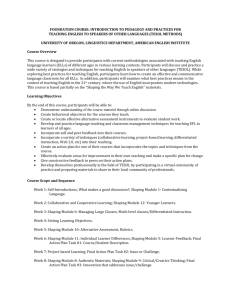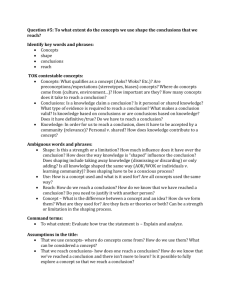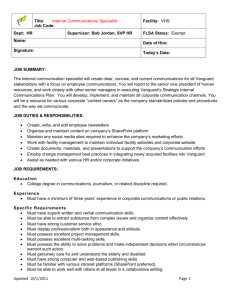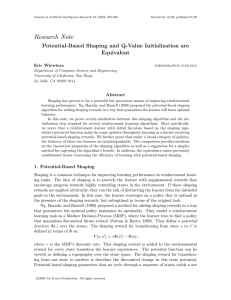FC 7 - Square Root - ABB SolutionsBank
advertisement
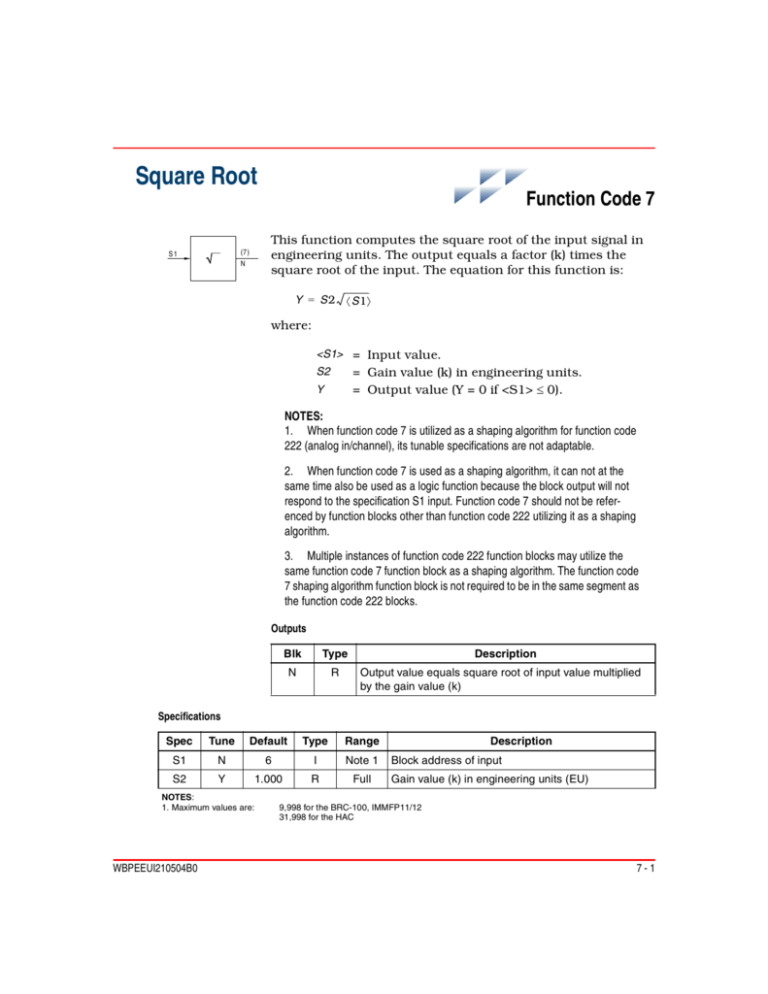
Square Root Function Code 7 This function computes the square root of the input signal in engineering units. The output equals a factor (k) times the square root of the input. The equation for this function is: (7 ) N S1 Y = S2 á S1ñ where: <S1> = Input value. S2 = Gain value (k) in engineering units. = Output value (Y = 0 if <S1> £ 0). Y NOTES: 1. When function code 7 is utilized as a shaping algorithm for function code 222 (analog in/channel), its tunable specifications are not adaptable. 2. When function code 7 is used as a shaping algorithm, it can not at the same time also be used as a logic function because the block output will not respond to the specification S1 input. Function code 7 should not be referenced by function blocks other than function code 222 utilizing it as a shaping algorithm. 3. Multiple instances of function code 222 function blocks may utilize the same function code 7 function block as a shaping algorithm. The function code 7 shaping algorithm function block is not required to be in the same segment as the function code 222 blocks. Outputs Blk Type N R Description Output value equals square root of input value multiplied by the gain value (k) Specifications Spec Tune Default Type Range S1 N 6 I Note 1 S2 Y 1.000 R Full NOTES: 1. Maximum values are: WBPEEUI210504B0 Description Block address of input Gain value (k) in engineering units (EU) 9,998 for the BRC-100, IMMFP11/12 31,998 for the HAC 7-1 Applications Specification S2 is the gain (k) applied to the value á S1ñ and can be any real number. It is used to scale an input signal to a meaningful or easy to work with output signal. Figure 7-1 shows an example of how function code 7 can be used. In the example, a flow rate of zero to 50,000 pounds per hour is being measured by a differential pressure transducer whose output range is zero to 200 inches of water. The flow is a function of the square root of the differential pressure multiplied by some constant (k). The equation for this example is: Flow = k diff. pressure If it is known that the flow is 50,000 pounds per hour at a transmitter output indicating 200 inches of water differential pressure, the required constant (k) can be calculated as follows: 50,000 pounds per hour = k 200 50,000 pounds per hour = k (14.142) 50, 000 --------------------- = k 14, 142 k = 3,535.534 Many nonlinear inputs need to be converted to linear outputs. Figure 7-2 illustrates converting a nonlinear pressure signal to a linear flow signal using function code 7. 7-2 WBPEEUI210504B0 A I/I (1 21 ) 2 01 0-20 0 in. H O 2 S1 (7) 3 00 Ö 0 TO 5 0,00 0 lb/hr S 2 = 35 35 .53 4 5 0,0 00 4 5,0 00 4 0,0 00 3 5,0 00 3 0,0 00 lb /h r 2 5,0 00 2 0,0 00 1 5,0 00 1 0,0 00 5,0 00 0 0 20 40 80 60 100 12 0 1 40 160 1 80 20 0 in . H O 2 T 02 026 A Figure 7-1. Converting a Pressure Signal to a Flow Rate , P R ES S U R E TR A N S M ITTE R A I/I N O N LIN E A R P R ES S U RE (121 ) 201 S1 (7) 3 00 Ö L IN E AR F LO W S 2 = 10 PR ESSU RE % 100 100 90 90 80 80 70 70 60 60 50 % 50 40 40 30 30 20 20 10 10 0 0 10 20 30 40 50 6 0 % 70 80 9 0 100 0 F LOW 0 10 20 30 40 5 0 60 70 80 90 100 % T 0202 7A Figure 7-2. Converting a Nonlinear Pressure Input to a Linear Flow Output WBPEEUI210504B0 7-3 WBPEEUI210504B0



